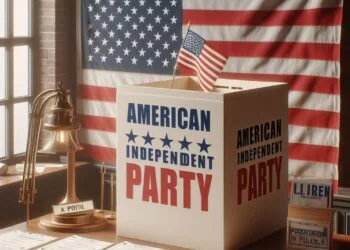Introduction
What is monetary policy? You’ve probably heard phrases like “hobby fee hikes,” “quantitative easing,” or “significant bank decisions” within the information. All these terms are part of what’s referred to as economic coverage — a effective tool used by governments and principal banks to control the economy.
But what does monetary coverage truely mean? How does it affect things like inflation, employment, or even your non-public finances?
In this easy manual, we’ll destroy down the basics of economic coverage, the way it works, why it subjects, and how it could impact your day by day lifestyles as a customer, investor, or enterprise proprietor.
What Is Monetary Policy?
Monetary coverage refers back to the moves taken with the aid of a country’s important bank (along with the Federal Reserve in the U.S., the European Central Bank within the EU, or the Bank of England inside the UK) to govern the cash supply and interest fees so that it will achieve financial stability and boom.
Its predominant goals include:
- Controlling inflation
- Encouraging employment
- Stabilizing currency fee
- Promoting sustainable financial growth
Who Controls Monetary Policy?
In maximum nations, financial coverage is carried out by using an unbiased vital financial institution, which operates one at a time from the political system to keep away from quick-term political influence.
Examples of relevant banks:
- Federal Reserve (Fed) – United States
- European Central Bank (ECB) – Eurozone
- Bank of England – United Kingdom
- Bank of Japan, Reserve Bank of India, and many others.
These institutions are tasked with monitoring economic signs and adjusting coverage tools accordingly.
Types of Monetary Policy
There are two primary sorts of financial policy:
🔺 1. Expansionary Monetary Policy
Used throughout monetary slowdowns or recessions to stimulate boom.
Key moves:
- Lowering hobby costs
- Increasing money deliver
- Buying authorities securities (quantitative easing)
Goal: Encourage borrowing, increase spending, improve investment, and decrease unemployment.
🔺 2. Contractionary Monetary Policy
Used while the economic system is overheating or inflation is growing too fast.
Key actions:
- Raising hobby prices
- Reducing money deliver
- Selling authorities bonds
Goal: Slow down spending, lessen inflation, and prevent asset bubbles.
How Monetary Policy Tools Work
Central banks use numerous tools to control the financial system:
💼 1. Interest Rates (Policy Rate)
The most not unusual device. By raising or decreasing the benchmark interest charge, the relevant financial institution can impact borrowing and saving conduct.
- Lower quotes: Cheaper loans → extra spending → economic increase.
- Higher quotes: Costlier loans → much less spending → slower inflation.
💰 2. Open Market Operations (OMOs)
This entails shopping for or selling government bonds inside the monetary marketplace.
- Buying bonds → increases cash deliver → stimulates financial system.
- Selling bonds → decreases money deliver → slows economy.
🏦 3. Reserve Requirements
This is the minimum sum of money that banks must hold in reserve and not lend out.
- Lower reserve: Banks can lend extra → boosts economy.
- Higher reserve: Banks lend much less → slows down spending.
💳 4. Quantitative Easing (QE)
A cutting-edge approach wherein central banks inject cash immediately into the monetary machine by shopping for large amounts of government and corporate bonds.
Used specially at some stage in crises like the 2008 financial crash or COVID-19 pandemic to aid liquidity and enhance markets.
Why Monetary Policy Matters to You
Monetary policy isn’t just about massive financial phrases — it impacts your pockets, task prospects, and the charges you pay each day.
✅ 1. Affects Loan and Mortgage Rates
Changes in interest costs determine how a good deal you pay for:
- Home loans
- Car financing
- Student debt
- Credit card balances
Example: A 1% upward push in hobby quotes can boom your month-to-month mortgage fee through hundreds of bucks.
✅ 2. Impacts Savings and Investment Returns
When quotes are excessive, your financial savings money owed and bonds earn more hobby.
When prices are low, your returns drop, pushing humans closer to riskier assets like shares or real property.
✅ 3. Influences Inflation and Prices
Central banks boost quotes to govern inflation — which at once influences your price of:
- Food
- Gasoline
- Utilities
- Rent
✅ 4. Job Market and Employment
Expansionary policy (low costs) generally leads to job advent.
Contractionary policy (high fees) might also cool hiring and gradual commercial enterprise growth.
✅ 5. Currency Value and Imports
Changes in financial policy can have an effect on the trade rate:
- Higher charges → more potent currency → less expensive imports
- Lower prices → weaker forex → dearer overseas goods
Real-World Example: The U.S. Federal Reserve in Action
During the COVID-19 pandemic, the Federal Reserve slashed interest fees to nearly 0 and released huge quantitative easing.
Outcome:
- Boosted stock market
- Encouraged borrowing and spending
- Helped keep away from deeper recession
However, this additionally contributed to:
- Asset bubbles
- Surging inflation in 2022–2023
To counteract this, the Fed later raised fees aggressively — a conventional case of contractionary monetary coverage.
Monetary Policy vs. Fiscal Policy
Although they both affect the economy, those are one of a kind:
| Feature | Monetary Policy | Fiscal Policy |
|---|---|---|
| Who controls it | Central bank | Government (Congress/Parliament) |
| Tools used | Interest rates, money supply | Taxes, government spending |
| Goal | Inflation control, stability | Economic growth, redistribution |
Both policies paintings best together, particularly for the duration of financial crises.
Limitations of Monetary Policy
While financial coverage is strong, it has limits:
- Time lag: Effects take months to materialize.
- Consumer conduct: People won’t spend despite low charges if confidence is low.
- Global financial system: International events can lessen effectiveness (e.G., wars, pandemics).
- Interest charge ground: Central banks can’t push rates beneath zero for all time.
How to Stay Informed About Monetary Policy
To understand how destiny choices may also effect your budget, follow:
- Central bank statements (e.G., FOMC conferences)
- Economic indicators: Inflation rate, unemployment, GDP increase
- Trusted monetary news resources
Some equipment:
- Trading Economics – Central Bank Rates
- Bloomberg
- Investopedia – Monetary Policy Basics
Conclusion
Monetary coverage may appear to be a complicated monetary subject matter, but its effects ripple through each part of your economic life. From mortgage bills to activity availability and meals fees, primary bank decisions form your financial truth.
By expertise the basics of monetary policy — what it’s miles, the way it works, and what it way for you — you’re higher prepared to make clever choices in an ever-changing economy.
Key Takeaways:
- Monetary coverage controls hobby rates and money deliver to influence the economic system.
- Central banks use gear like interest charges, OMOs, and QE to manage inflation and growth.
- Changes in monetary coverage affect your loans, savings, job potentialities, and greater.
- It works along monetary policy but has its very own strengths and obstacles.
- Staying knowledgeable enables you adapt to financial shifts and guard your finances.












